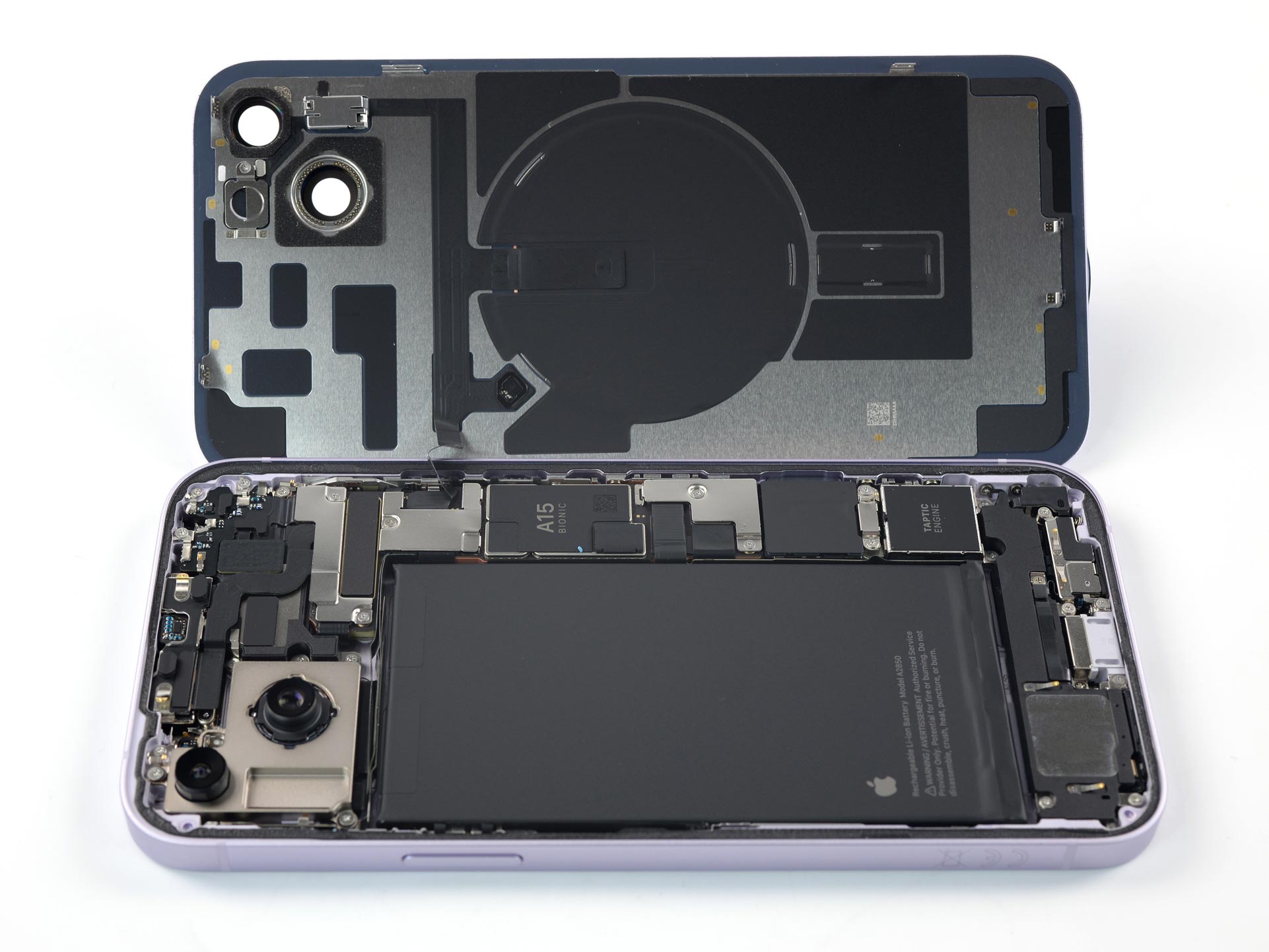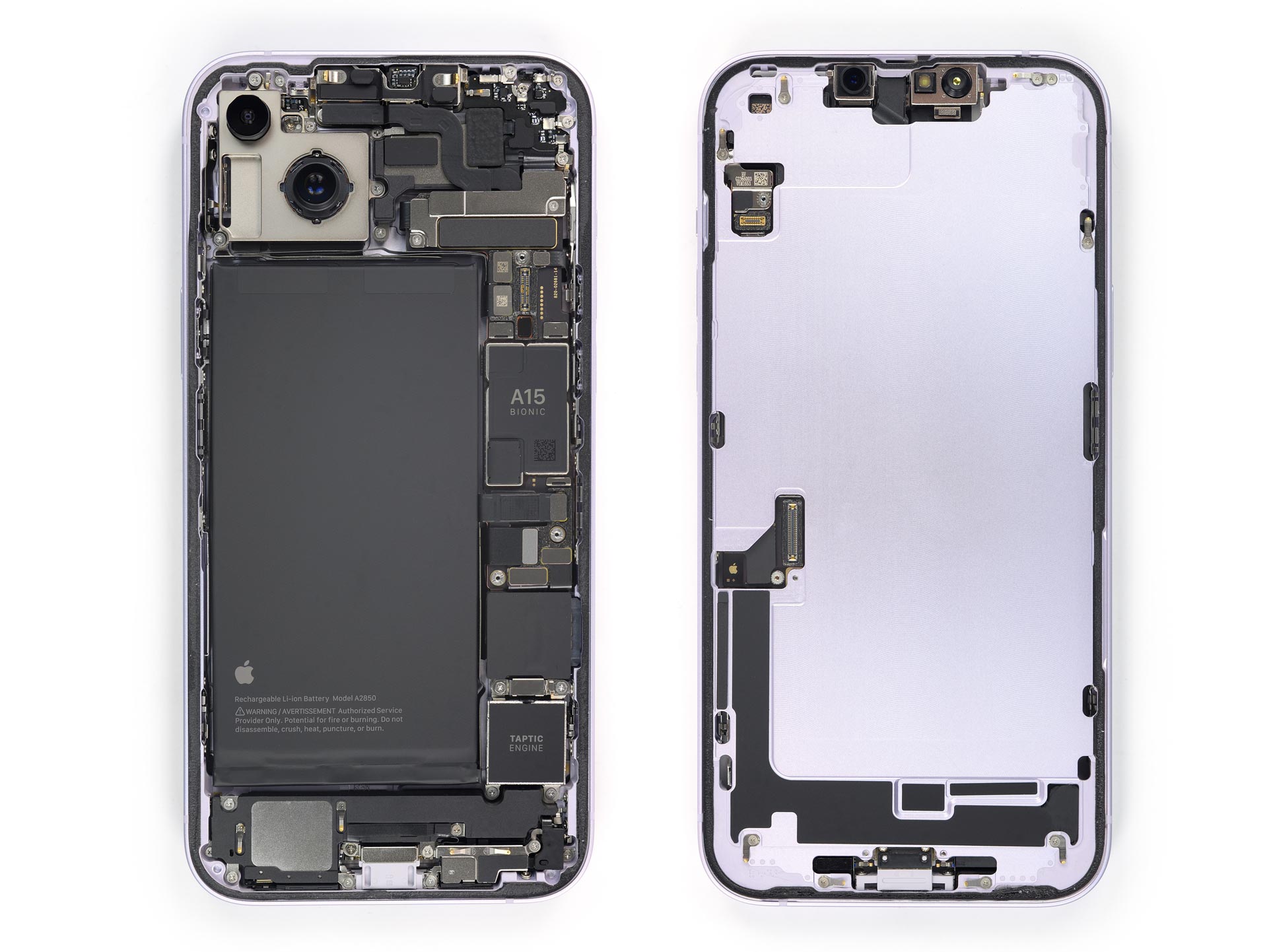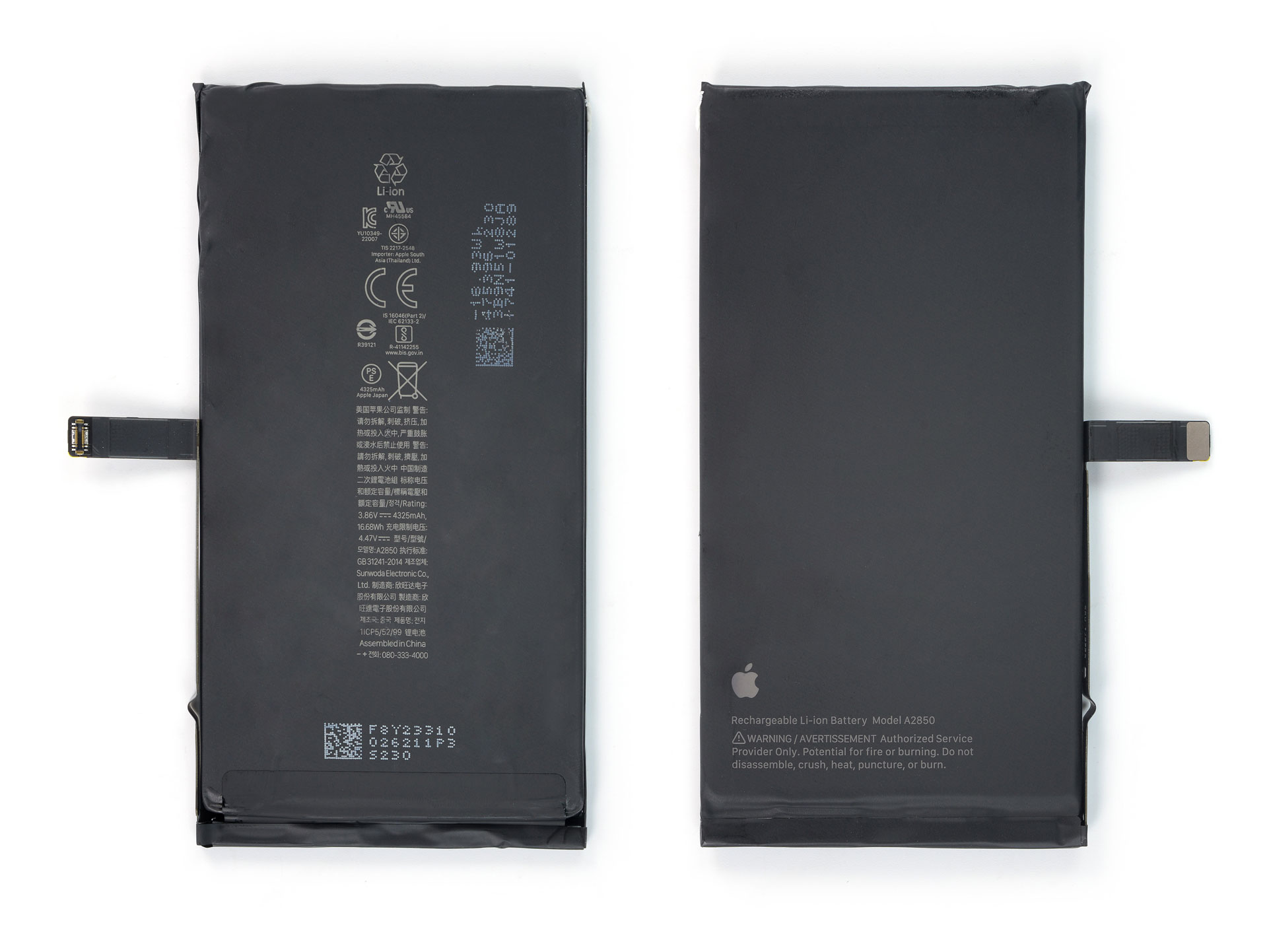Did you forget there was another iPhone 14 coming out? We don’t blame you. The 14 Plus launches today, weeks after the 14 and 14 Pro. Whether delayed by ongoing supply-chain issues, or strategically withheld to goose Pro sales isn’t really important. The good news is that the iPhone 14 Plus follows in the repairable footsteps of the basic 14, spurning the outmoded, less-repairable 14 Pro form-factor.


Heating, prying and a little suction get us a solid foothold on the screen, and opening it up grants us the view we’ve come to love: a protective shield, and easily-accessed set of screen connectors.

Basic smartphone construction has remained virtually unchanged since the iPhone 5 a decade ago, with most Android phones relying on even older rear-opening patterns. The iPhone 5 figured out how to safely support a display such that it can be the entry point. Meaning quicker screen swaps, and great access to the battery—the highest priority repairs in a mobile device.
While that consistent design heritage makes manufacturing easier, it does feel a bit stagnant, and more importantly, hasn’t done much to improve repairability. With one fell swoop, Apple has further revolutionized phone repair. Better late than never!
Allowing the screen and rear case to open independently does three things: 1) It minimizes the chance of collateral damage to high value components, ie you won’t accidentally break the screen on your way to a battery swap. 2) You get immediate access to the two most breakable components: the screen and back glass and 3) battery replacement is just as easy as before—a must since all li-ion batteries are consumable components.
Speaking of batteries, a slick screen removal is nice but we really care about battery access, so it’s time to pry open that previously-unrepairable back glass!



Aside from a decidedly more gigantic battery (weighing in at 16.68 Wh) the Plus looks virtually the same as the 14—and that’s a good thing. Battery access is immediate and supported by stretch-release adhesive. Cameras and speakers are also within reach.
Removable front and back panels effectively doubles the ingress points, but Apple is clearly confident in the design as they used it on the Plus—their biggest phone in the lineup. This is a great sign for future Pros. If Apple is happy with the performance on the 14 and 14 Plus, we’re likely to get more repairable Pro models soon. And with rumored changes like in-screen buttons and USB-C, the Pros are already on track for a redesign in the next year or so.
Final Verdict? Apple is batting .500 with the iPhone this year, and that ain’t bad. We’ve also got a bright glimmer of hope for the other half of the product lineup in the coming models, and that’s about the best holiday gift we could ask for.
Although, if we can ask one more thing, maybe Apple can focus their ingenuity on their Apple Watch line, too? Exposed screws and dual entry is great, but unlike the 14 and 14 Plus, the changes didn’t get us much. Here’s hoping for more intrepid exploration on Apple’s part!
Check out the video versions of the iPhone 14 teardown and 14 Pro, too, to get the scoop on the latest phones, most of the vanilla 14 info applies to the Plus as well. Still not satisfied? We might be able to answer some quick questions in the comments, or on social media, so drop us a line! PS: we’ll have wallpapers up soon!





0 opmerkingen